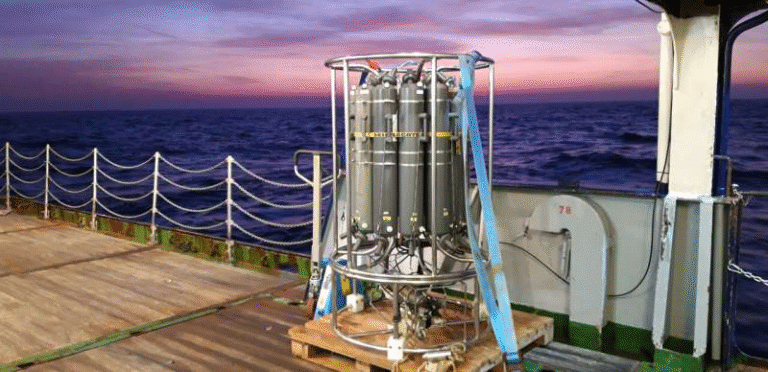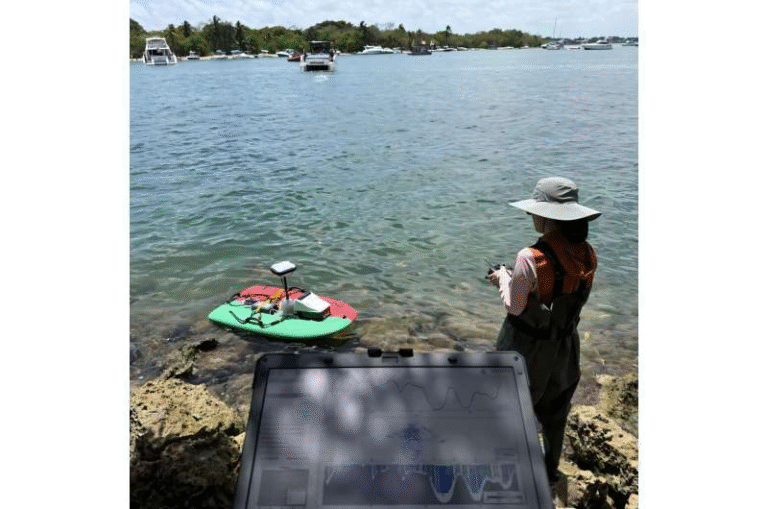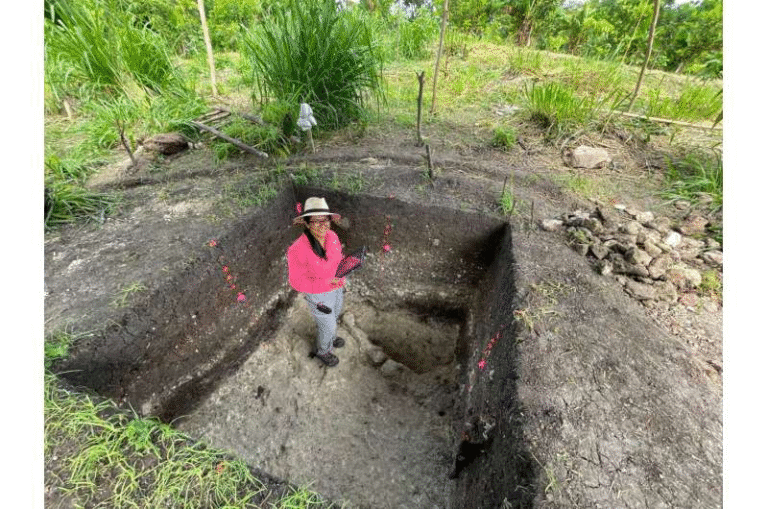How Countries Are Trying To Manage Nuclear Waste And Why Iodine-129 Has Become a Major Focus

Nuclear waste has always been one of the most complicated parts of using nuclear energy, and a big reason for that is a stubborn radionuclide called iodine-129. It sticks around for millions of years, moves easily through soil and water, and ends up in the human thyroid if ingested. A new study published in Nature Sustainability takes a deep, numbers-driven look at how different countries handle this material and what actually happens to I-129 under each strategy.
The study compares three real-world nuclear waste management approaches: the U.S. strategy of sealing spent nuclear fuel deep underground, the French strategy of reprocessing fuel and releasing diluted radioactive liquid into the ocean, and a third approach that adds high-efficiency filters to capture iodine before releasing or disposing of anything. The aim is to understand how much I-129 each strategy releases, how it behaves in the environment, and what this means for long-term safety.
Below is a straightforward breakdown of all the specifics, plus some additional context to help make sense of why this single radionuclide plays such an outsized role in nuclear-waste discussions.
Why Iodine-129 Is Such a Big Deal
Iodine-129 (I-129) is one of the most persistent byproducts of nuclear reactions. It has a half-life of 15.7 million years, which means it decays extremely slowly. That alone would be enough to make regulators cautious, but I-129 also has high environmental mobility. It dissolves easily, spreads rapidly, and doesn’t bind well to sediment or rock. Because iodine tends to concentrate in the thyroid gland, long-term exposure—even at low levels—raises concerns.
The U.S. maintains extremely strict limits for how much I-129 can appear in drinking water: 5.66 nanograms per liter, the lowest regulation of any radionuclide. This limit shapes how waste facilities are designed and evaluated.
Scientists use I-129 as a kind of “indicator radionuclide” when assessing repository safety. If a disposal strategy can contain I-129, chances are it can contain everything else as well.
The Three Strategies Compared in the Study
The research team from MIT and several national laboratories modeled I-129 releases per 1 gigawatt-electric year (1 GWe-yr), which is the electricity produced by a 1-gigawatt reactor over one year. This keeps comparisons consistent across different approaches.
Here’s how each strategy performs:
1. Direct Deep Geological Disposal (U.S. Approach)
In this method, spent nuclear fuel (SNF) is placed inside engineered canisters and buried in deep underground repositories. The assumption used in the study is that canisters fail after 1,000 years, which is actually a conservative estimate—many designs aim for much longer containment.
Under this approach, the amount of I-129 that eventually reaches the biosphere is extremely small:
- 2.14 × 10⁻⁸ kg/GWe-yr released between year 1,000 and year 1,000,000
That number is tiny—around one hundred-millionth of what is released in the French approach. The key advantage of this method is isolation. The waste is physically separated from the biosphere so that even after long timescales, only a minute fraction escapes.
Deep disposal does require geological stability, long-term institutional management, and heavy engineering, but it drastically minimizes environmental release.
2. Reprocessing With Dilution and Release (French Approach)
France recycles its spent fuel—extracting usable uranium and plutonium—and disposes of the remainder. During reprocessing, the facility produces liquid radioactive effluents that are diluted and discharged into the ocean.
About 153 kilograms of I-129 are released into the sea each year, well within French regulatory limits.
The study concludes:
- 4.51 kg/GWe-yr of I-129 is released into the biosphere
- That’s 91% of the total I-129 in the original spent fuel
This is the highest release among the three strategies.
Researchers found low concentrations of I-129 in European waters near France and former U.K. reprocessing sites (like the English Channel and North Sea), but despite low concentrations, the total mass discharged is very large. Dilution reduces risk locally, but the long-term environmental inventory continues to grow.
3. Reprocessing With High-Efficiency Gas Filters + Shallow Disposal
Here, fuel is still recycled, but gaseous effluents go through 99% efficient filters that trap I-129, which is then disposed of in shallow underground sites as low-level radioactive waste.
The study found:
- 0.05 kg/GWe-yr of I-129 is released
- 94% of the I-129 ends up in shallow disposal sites
This option dramatically reduces releases compared to the French dilution approach. But it introduces a new concern: future human intrusion. Shallow sites rely on institutional control, typically for 100 to 1,000 years. After that period, accidental digging or construction could disturb the waste and release iodine into the environment.
The study emphasizes that this is a real consideration, not a theoretical one—shallow low-level waste sites historically have been vulnerable to such disruptions.
What the Researchers Found in Surface Water
The team also examined I-129 concentrations in surface waters near various nuclear sites:
- The English Channel and North Sea show elevated but low-risk I-129 levels due to dilution of reprocessing discharges.
- The Columbia River in the U.S. (downstream from Cold War weapons production sites) was studied, along with a similar facility in South Carolina.
- The South Carolina site showed much higher local concentrations, because effluents were discharged far from major rivers, limiting dilution.
This comparison shows how discharge location, not just discharge amount, affects surface-water concentrations.
What This All Means for Nuclear Waste Policy
The study doesn’t argue that reprocessing is bad or that deep disposal is perfect. Instead, it provides a life-cycle view of I-129—where it gets released, how much enters the environment, and when those releases occur.
Some key takeaways:
- The current practice of reprocessing and dilution releases the majority of I-129 into the environment today.
- Deep geological disposal releases extremely small amounts, spread over millions of years.
- Using high-efficiency filters greatly reduces immediate environmental release but introduces long-term risks if shallow sites are ever disturbed.
- Countries like Japan, which plans to use more advanced I-129 filtration during reprocessing, could significantly reduce discharges.
- Historically, industries relied on “dilution is the solution to pollution”, but modern environmental protection is shifting toward containment and isolation.
The researchers stress that nuclear energy should not be dismissed because of waste issues, especially when compared with other industries that release pollutants like CO₂, mercury, and PFAS. The nuclear sector has some of the most advanced waste-isolation technologies, and improving I-129 handling could further strengthen its environmental profile.
A Bit More About Nuclear Waste and I-129
To round out the 1000-word overview, here are a few additional details that help contextualize the discussion:
Where I-129 Comes From
- It is produced during nuclear fission from isotopes like uranium-235.
- It also appeared in large amounts during historical nuclear weapons production.
How It Travels
- I-129 typically appears as iodide or iodate, which dissolve easily.
- Because it does not easily bond with soil, it can travel long distances through groundwater.
How Countries Are Preparing for the Future
- Finland and Sweden are among the first to build deep geological repositories, which are intended to isolate waste without relying on dilution.
- Several nations debate between reprocessing (to reuse spent fuel) and direct disposal, weighing economic, environmental, and security concerns.
- Advanced gas-filter technologies are improving and may become standard in future reprocessing plants.
Research Paper
The Iodine-129 Paradox in Nuclear Waste Management Strategies
https://www.nature.com/articles/s41893-025-01629-2





